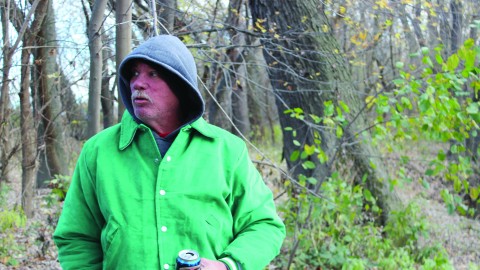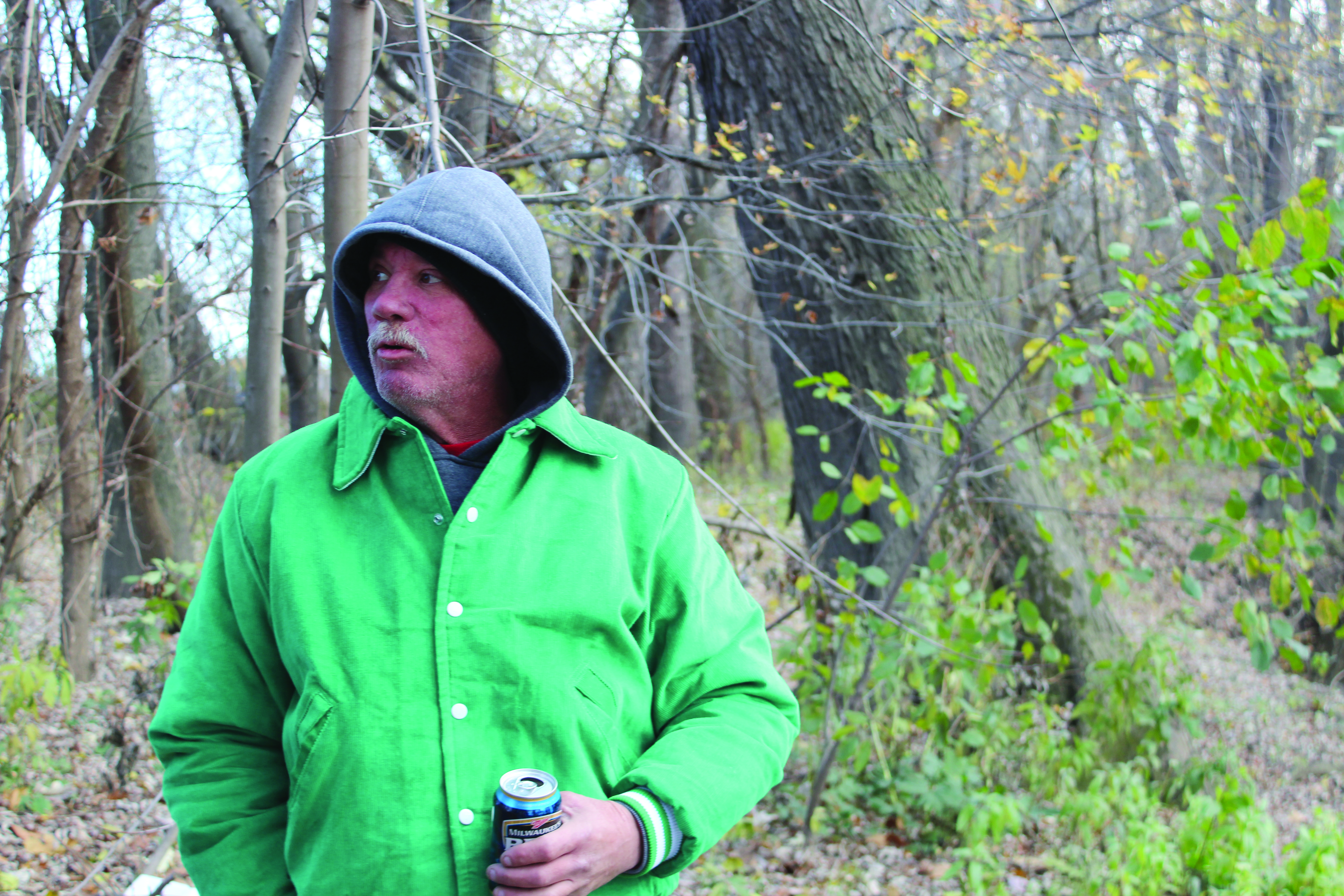By Billy Ludt

Tony Avery gripped a can of Milwaukee’s Best in his left hand and a once-lit cigarillo in the other. The wind sweeping in from the Mahoning River brushed up through the trees, putting out the ember as Avery spoke.
Leaves buried the train tracks behind Youngstown Pipe & Supply, leaving only the rails visible. A short distance from the Marshall Street Bridge, Avery motioned with his right arm toward a brick fixture in the woods.
Three sides of fence encompassed the brick structure. Black, charred wood, groundwork and slats were scattered across the site. Clothes, blankets, bottles and cans long ago littered showed signs of erosion.
Avery stood on the incline leading to the river, gazing at the remains.
“I didn’t even get my chimney finished yet,” he said.
Avery walked to the river, lighting his cigarillo.
Three years ago, Avery’s home on the river burned to the ground. After $12,000 and countless hours of work, an unclean chimney led to an unexpected fire; the makeshift home Avery built was gone.
“I put a lot of work in this place,” he said.
Avery’s home stood three stories tall, with a loft on the top floor that could fit four people. He housed other homeless people in the area, claiming to have taken care of 200 of them.
“I’m the king of the river rats,” Avery exclaimed.
Avery’s home became a place for festivities among family, friends and anyone else willing to join. He recalled people riding in on off-road vehicles and joining in on the fun.
“Man, there’d be 20 people here,” he said. “We’d be partying — there’d be gazebos, big circus tents.”
During the winter, Avery would string Christmas lights among the branches of overhanging trees. When the snow fell, Avery and his cabin-mates would light a fire and continue to drink.
“Nobody could believe how the f–k I was living,” he said. “I said, ‘What do you mean, man? This is how you live!’”
Splitting the current in the river is an island — a formation of halted driftwood, earth and skyscraping trees.
“This is my island,” Avery said. “Right over there.”
A flag clings to an island tree, stained black, unmoving. Across the river stands a refrigerator riddled with bullet holes.
Avery hunted game as a means of survival and protection. He told tales of mountain lions and bears wandering right past his front door, or down the railroad tracks.
He powered generators with marine batteries for use in boats, recharging them at the soup kitchen. He had all the amenities of home — television, radio, lights.
Avery kayaked and canoed up and down the Mahoning River. He fished, fed the geese and wrangled snapping turtles.
“I lived off the land all my life,” Avery said.
In 2010, Politiken, the Danish news organization, sent reporters to follow Avery for three days and document his actions.
“I can’t stand that pavement,” Avery said. “And where am I at now? Under that f—ing bridge.”
After the fire, squatters and drifters seized the land where Avery’s cabin once stood. He was forced to vacate and find another place to stay.
“Ain’t that a bitch?” he said. “I’m afraid of dying.”
Avery now lives with two others under the Marshall Street Bridge, in a tent.

Comments are closed.